Homemade basil pesto made the classic way with basil and pine nuts! Or make a different variation of the pesto with kale, arugula, carrots tops, and change up the nuts using cashews, walnuts, pecans, or almonds.
Use the pesto to make a pasta sauce, spread in sandwiches, drizzle over roasted vegetables, fish, chicken, or meat, stir it in risotto, and add to salads and pizza!
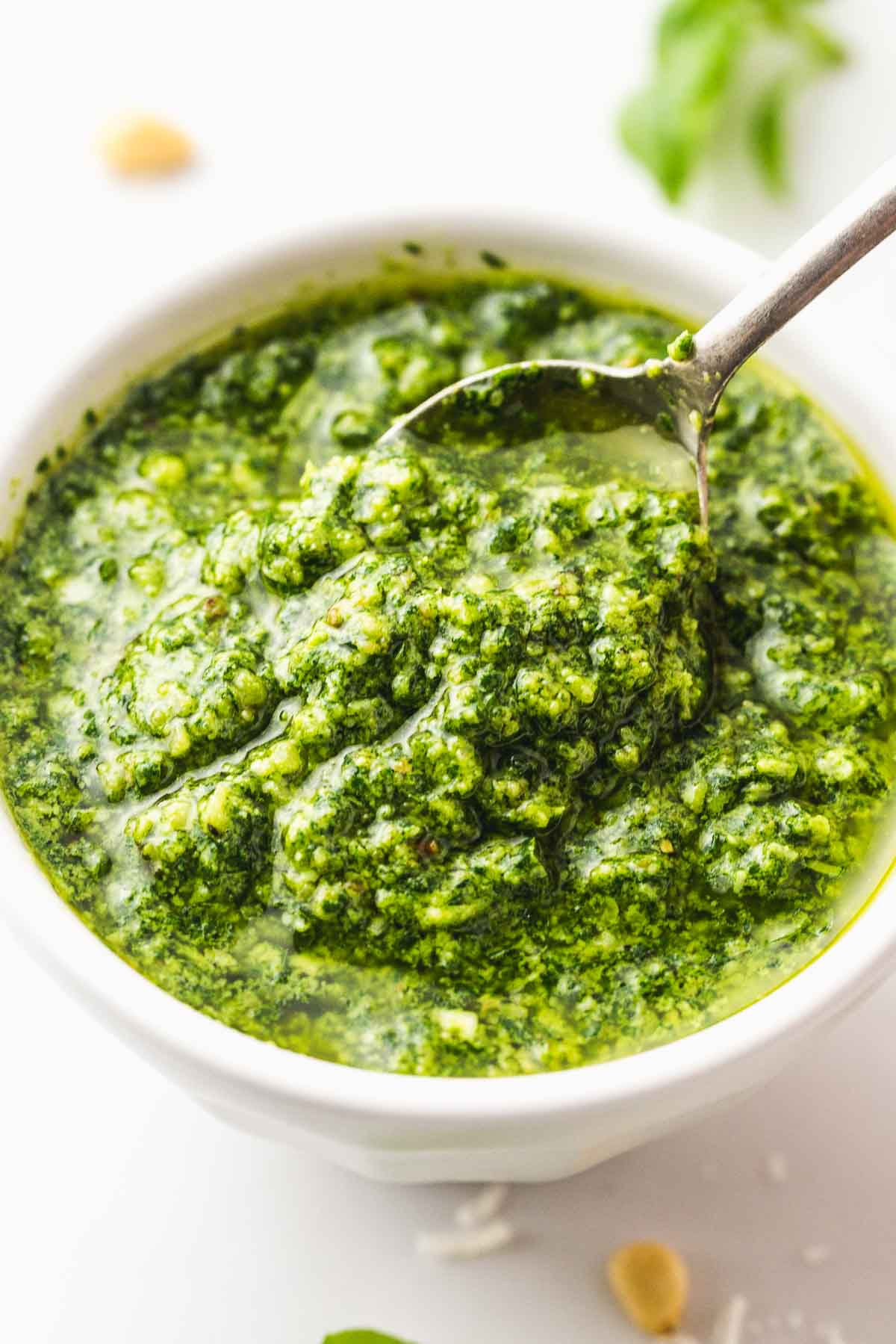
Pesto aka Pesto Alla Genovese, is an Italian aromatic sauce made with basil, pine nut, and hard cheese traditionally crushed into a paste using a marble pestle and a wooden mortar. I’m sharing my basic basil pesto recipe here using a food processor, but there are many variations that can be made if you follow my basic recipe and ingredient ratios.
This homemade pesto is perfect for Chicken Pesto Sandwiches, Caprese Sandwiches, Creamy Pesto Chicken, and my Creamy Chicken Pesto Pasta!
Pesto Recipe Ingredients
To make a basic pesto sauce, here’s what you’ll need:
- Basil leaves – Use FRESH basil leaves without the stems. You can also use kale, spinach, rocket/arugula, wild nettle, and even carrot tops to make carrot top pesto.
- Olive oil – A high-quality fresh and fruity extra virgin olive oil is best.
- Pine nuts – Traditional pesto is made with pine nuts, but they’re quite expensive. Substitute with walnut or cashew nuts for better value and the pesto will still taste amazing. To make it nut-free, use sunflower seeds.
- Parmesan – Use freshly grated parmesan cheese instead of buying the pre-grated stuff. Substitute with nutritional yeast for a vegan pesto.
- Garlic, salt, and pepper.
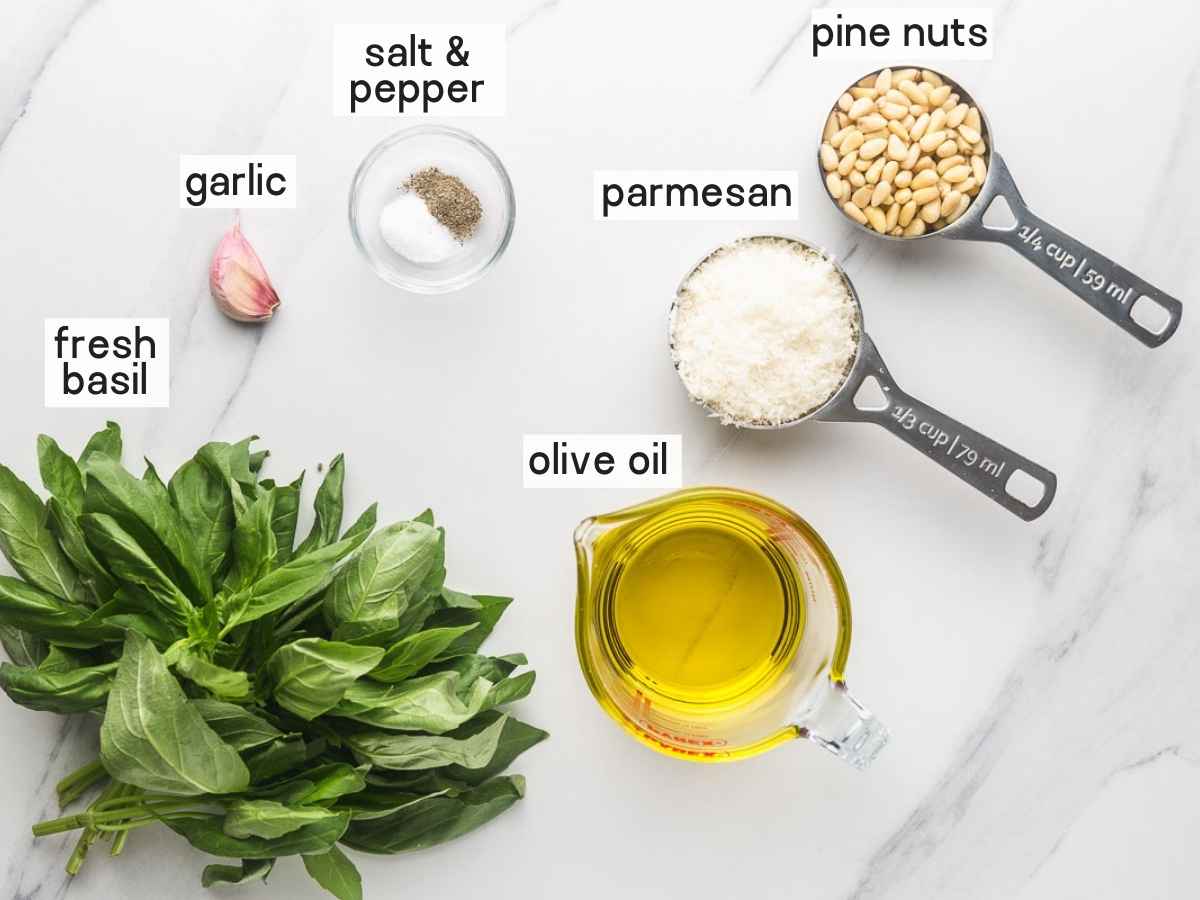
How to Make Pesto
- In a dry pan over low-medium heat (no oil), lightly toast the pine nuts or any other nuts you’re using. Remove from heat, and allow to cool.
- Place all of the ingredients except for the olive oil in the bowl of a food processor. Blend until completely broken down, and scrape off the sides of the bowl as needed.
- Add the olive oil gradually with the food processor running until you get a slightly emulsified sauce. Thin out with extra oil or water if needed.
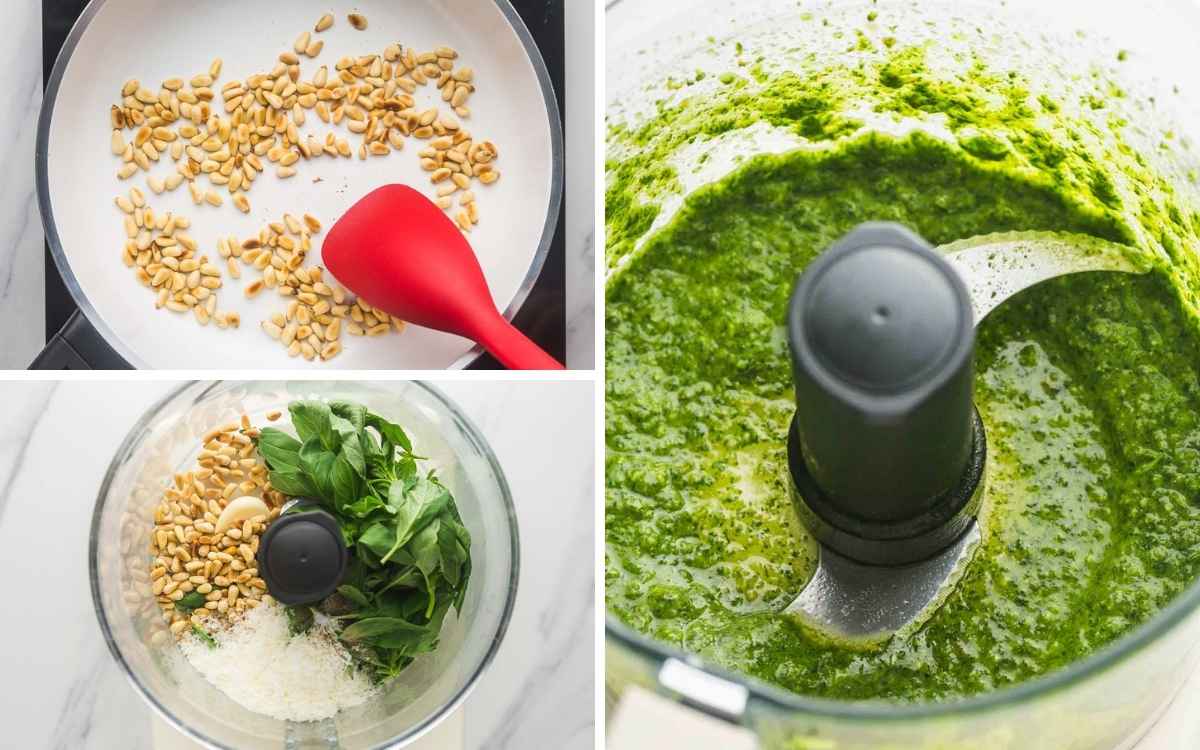
Top Tips
- It’s important to use FRESH basil leaves to make pesto. Wilted basil will result in a dark brown sauce.
- Adding a teaspoon of fresh lemon juice to the pesto will brighten it up and stop it from oxidizing, but this is totally optional.
- Some suggest blanching the basil leaves for 30 seconds, then cooling them in ice water to stop them from cooking. This is supposed to help with keeping the pesto green and not turning brown, I personally haven’t tried this method but it should work.
- Do NOT add more garlic to the pesto sauce, it will dominate and ruin the flavor.
- For a super fine and smooth pesto sauce, you will need to thin it out with more olive oil or water and blend for longer.
- If you don’t have a powerful food processor, you can use a blender but it will be a pain getting the pesto out of the jug.
- An immersion/hand blender also works.
Storing Tips
- Fridge: Leftover pesto sauce can be stored in the fridge in an airtight container for up to 3 days. A thin layer of olive oil can prevent the pesto from oxidizing and turning brown, treat it just like guacamole.
- Freezer: You can freeze pesto in an airtight container for up to 3 months.
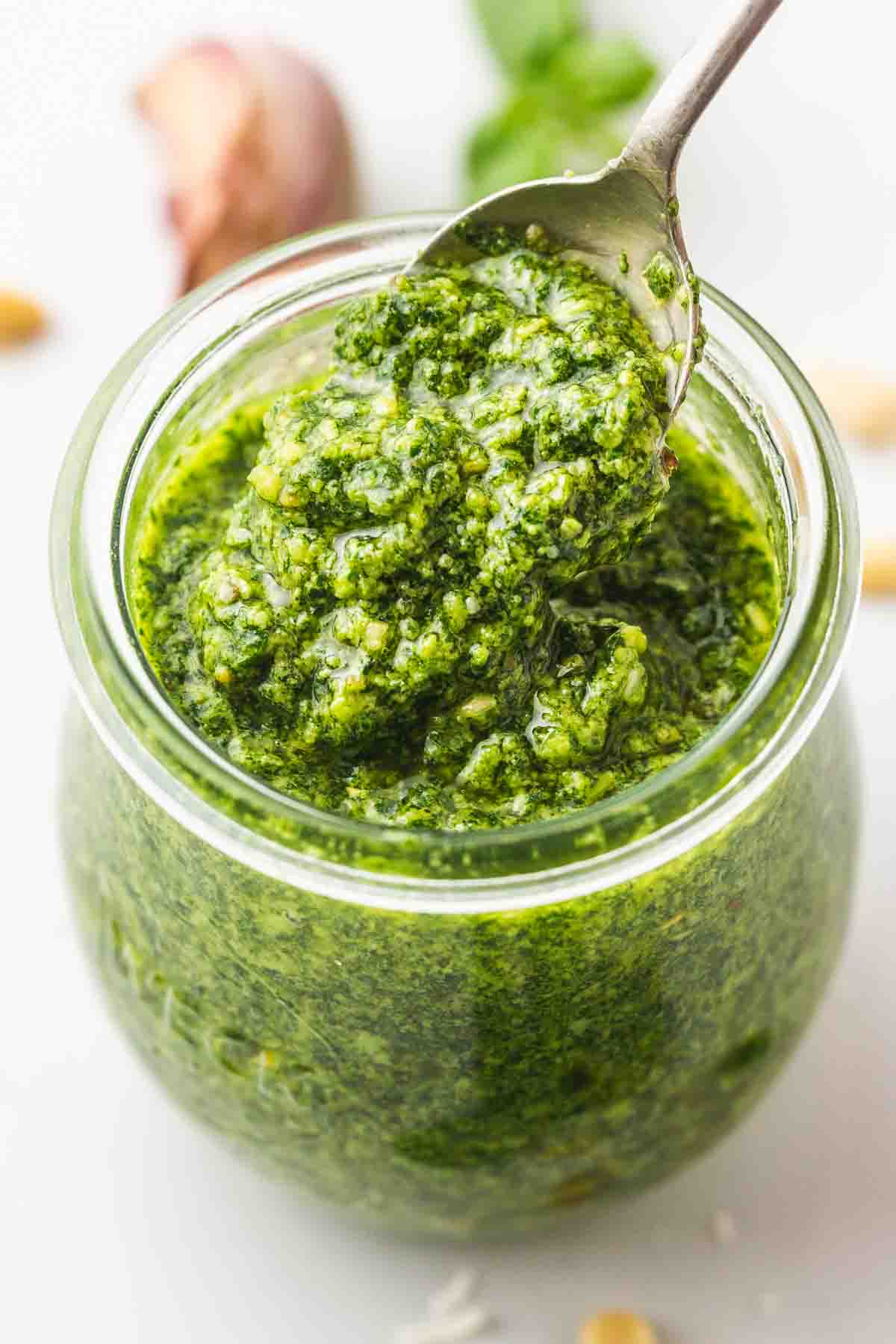
Pesto Variations
Leafy greens – You can make a great-tasting pesto sauce using almost any leafy greens. Think kale, wild rocket/arugula, spinach, parsley and cilantro, dill, mint, wild nettle, and wild garlic.
Nuts – As for the nuts, feel free to use any nut that you like. Pine nuts is the classic choice, but you can go for walnuts, cashews, hazelnuts, pecan, macadamia, pistachios, almonds, brazil nuts, or even peanuts.
Vegan – For a vegan version, substitute ½ cup of parmesan with ¼ cup of nutritional yeast.
Nut-free – For a nut-free version, substitute the nuts with sunflower seeds or pumpkin seeds. I’ve tried it and it works great!
Did you make this? Be sure to leave a review below and tag me on Facebook, Instagram, or Pinterest!

Homemade Basil Pesto
Equipment
Ingredients
- 2 cups fresh basil leaves just the leaves, no stems
- ¼ cup pine nuts
- 1 clove garlic
- ½ cup freshly grated parmesan cheese
- ¼ teaspoon ground black pepper
- ½ teaspoon salt
- ½ cup extra-virgin olive oil
Instructions
- In a dry pan over low-medium heat (no oil), lightly toast the pine nuts or any other nuts you’re using. Remove from heat, allow to cool.
- Place all of the ingredients except for the olive oil in the bowl of a food processor. Blend until completely broken down, scrape off the sides of the bowl as needed.
- Add the olive oil gradually with the food processor running until you get a slightly emulsified sauce. Thin out with extra oil or water if needed.
Notes:
- I use table salt to make the pesto. If you’re using kosher salt, you will need to add around 1 teaspoon. Start with ½ teaspoon, taste the pesto, and add more if needed.
- Use fresh basil leaves without the stems to make the pesto.
- Substitute the basil with kale, wild rocket/arugula, spinach, parsley and cilantro, dill, mint, wild nettle, and wild garlic.
- Substitute the pine nuts with walnuts, cashews, hazelnuts, pecan, macadamia, pistachios, almonds, brazil nuts, or even peanuts.
- For a vegan pesto, substitute ½ cup of parmesan with ¼ cup nutritional yeast.
- For a nut-free version, substitute the nuts with sunflower or pumpkin seeds.
- Store in the fridge in an airtight container for up to 3 days. A thin layer of olive oil can prevent the pesto from oxidizing and turning brown. Freeze for up to 3 months.
- Yield – This recipe makes about 1 cup of pesto, we divided it into 8 portions.
- Nutrition values are calculated per 1 portion of pesto (⅛ a cup)
Nutrition Information
This website provides approximate nutrition information for convenience and as a courtesy only. Nutrition data is gathered primarily from the USDA Food Composition Database, whenever available, or otherwise other online calculators.
© Little Sunny Kitchen

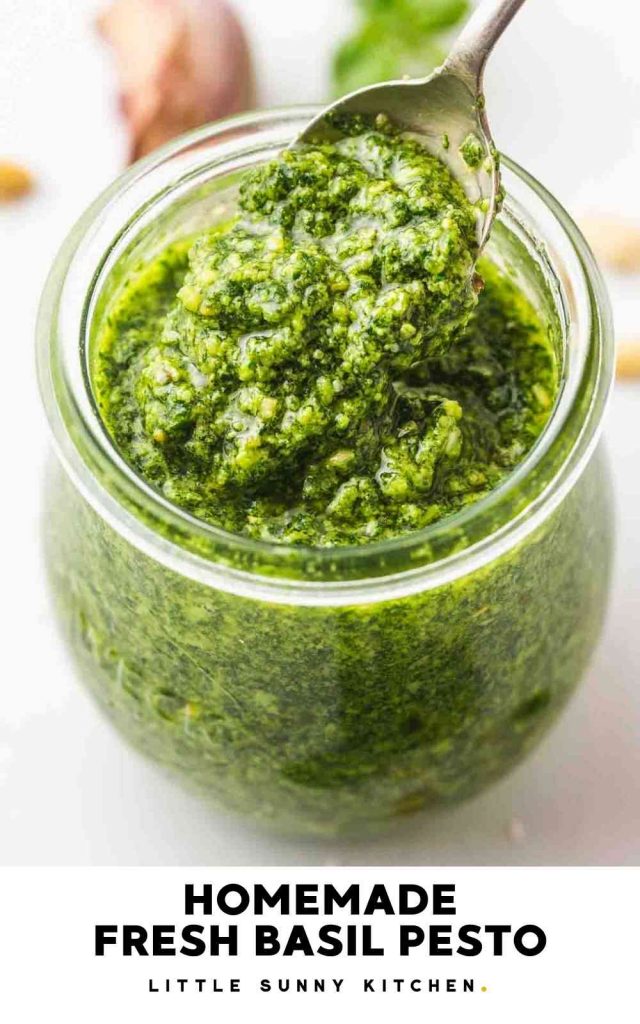
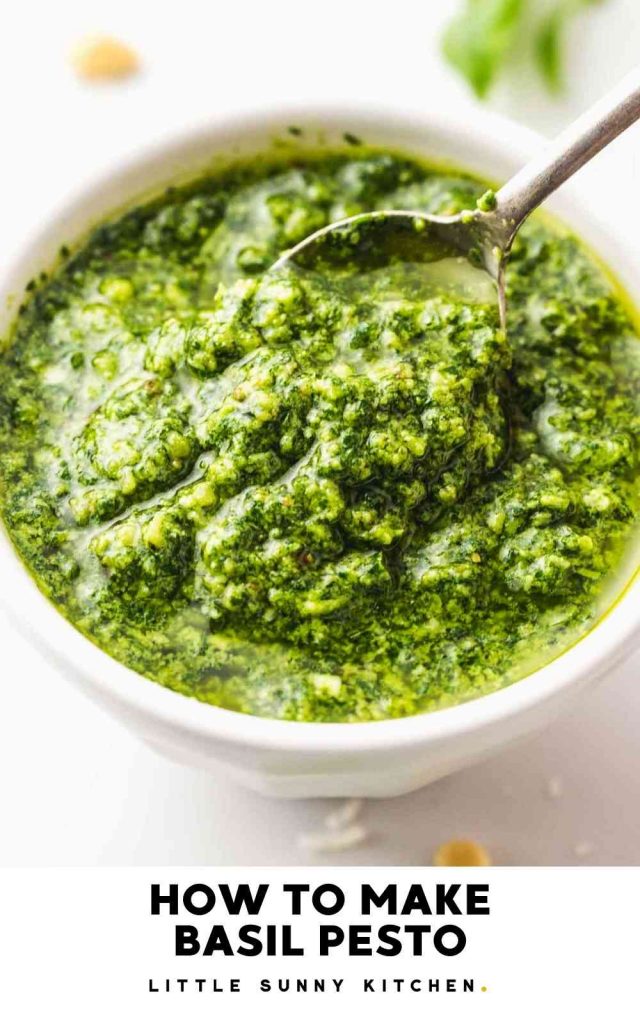
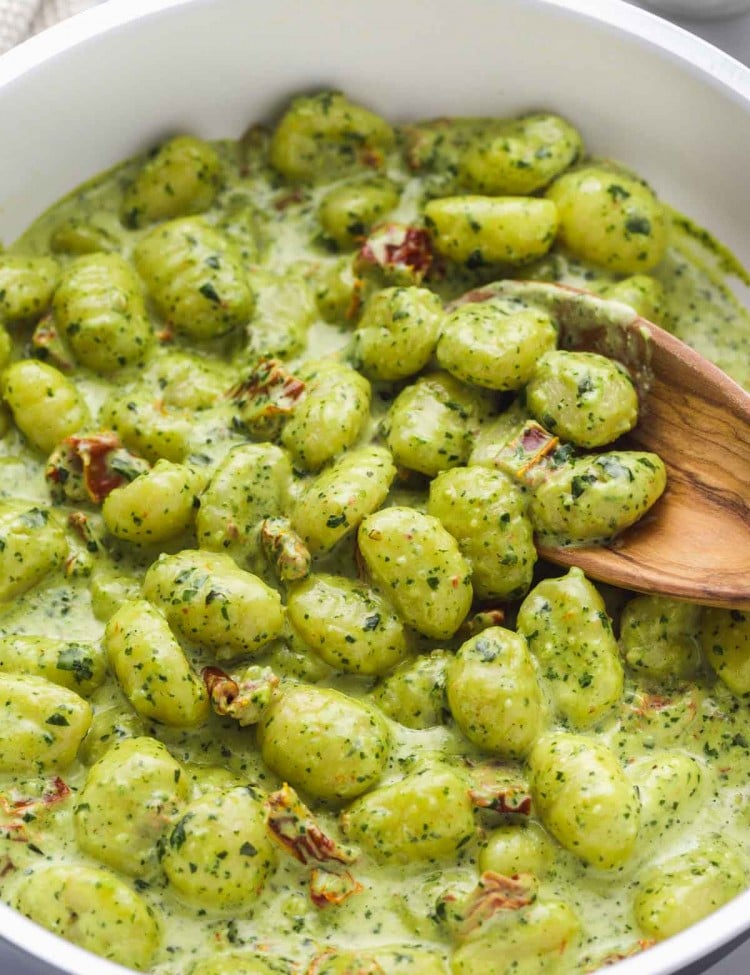
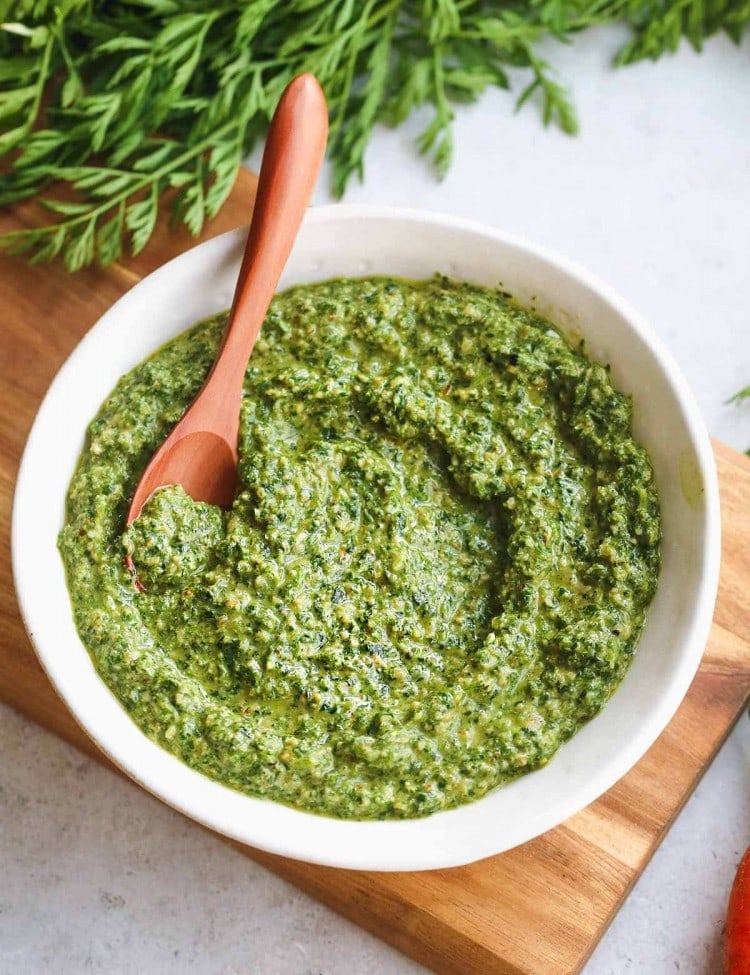
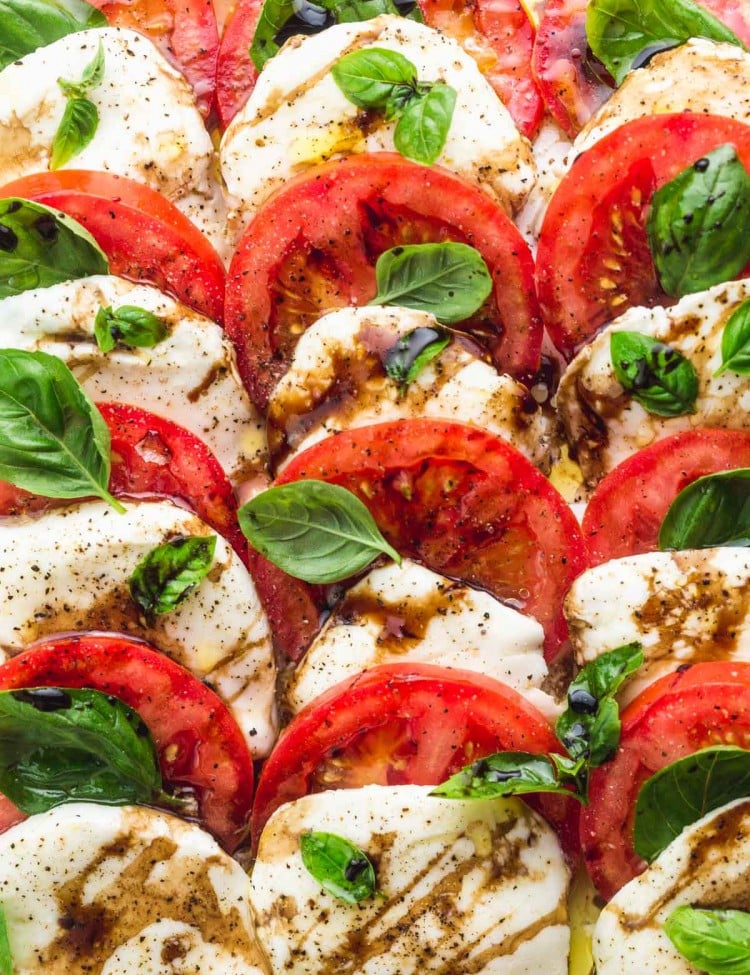
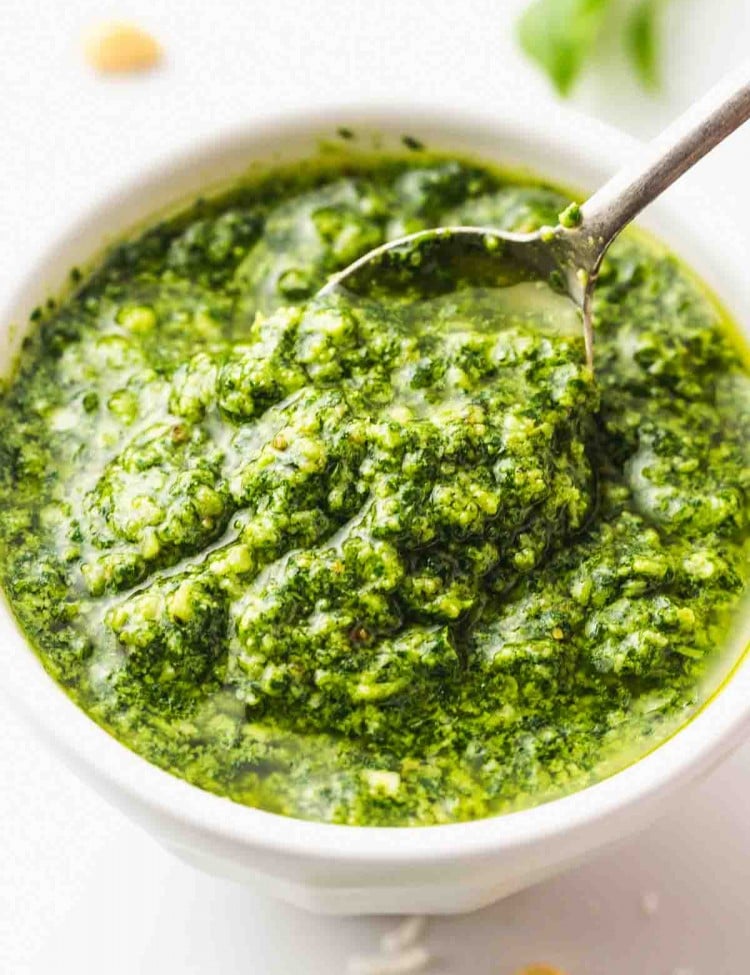
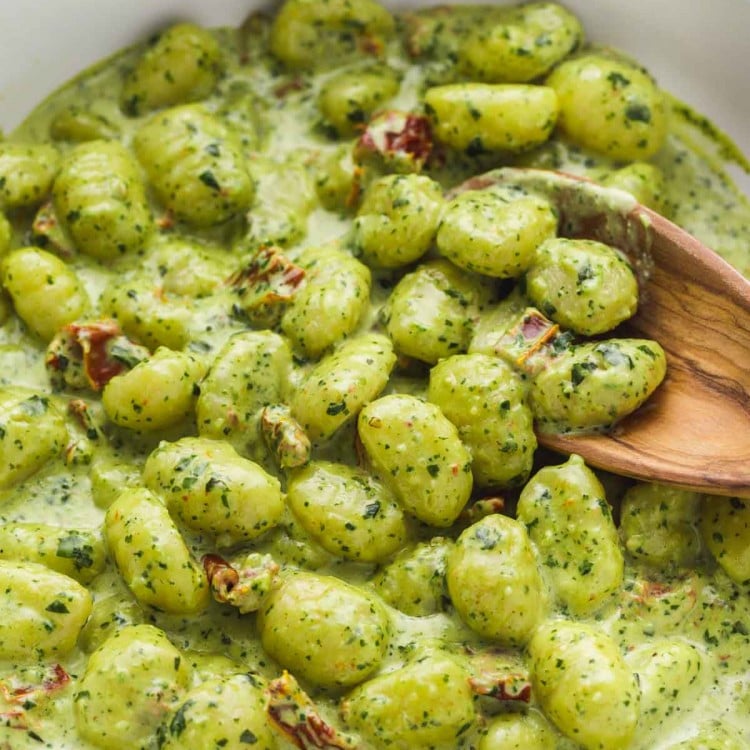
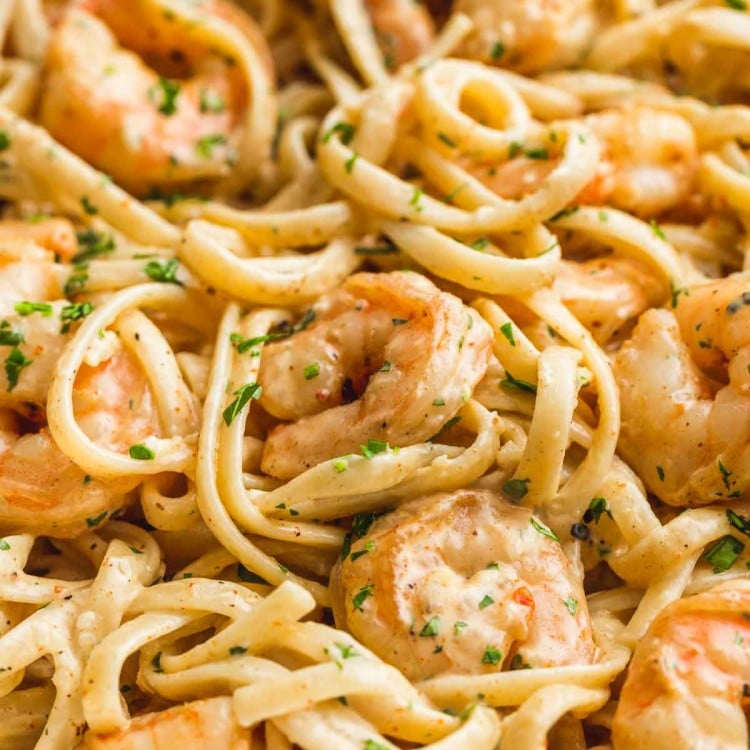
Kelly says
Delicious! I added English cucumber for more snap. On day 2, I added chick peas for an additional protein. This is one I will make again and again.
Little Sunny Kitchen says
Sounds yummy! Thanks so much for the review.
Gregory J Pierce says
Excellent!
Diana says
Glad to hear you liked it!